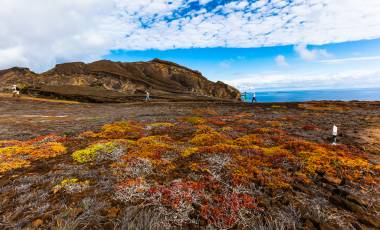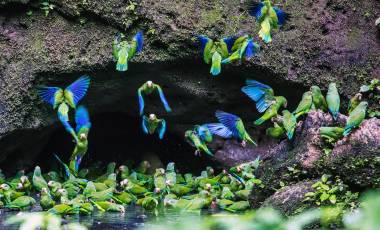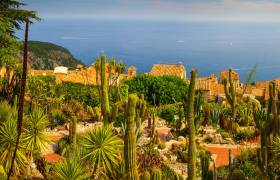Read time – 3 minutes
The natural world is a continual source of wonder and inspiration. Life flourishes in the most unusual and unexpected places, showing incredible resilience and adaptability.
If you want to see the truly bizarre and creative solutions that evolution can achieve, you have to go to unique places… where better than the Galapagos, the birthplace of the theory of evolution itself? This archipelago is a paradise for unusual and interesting fauna, so let’s dive in and discover 6 perfectly adapted Galapagos animals.
Galapagos Wildlife
Marine Iguana
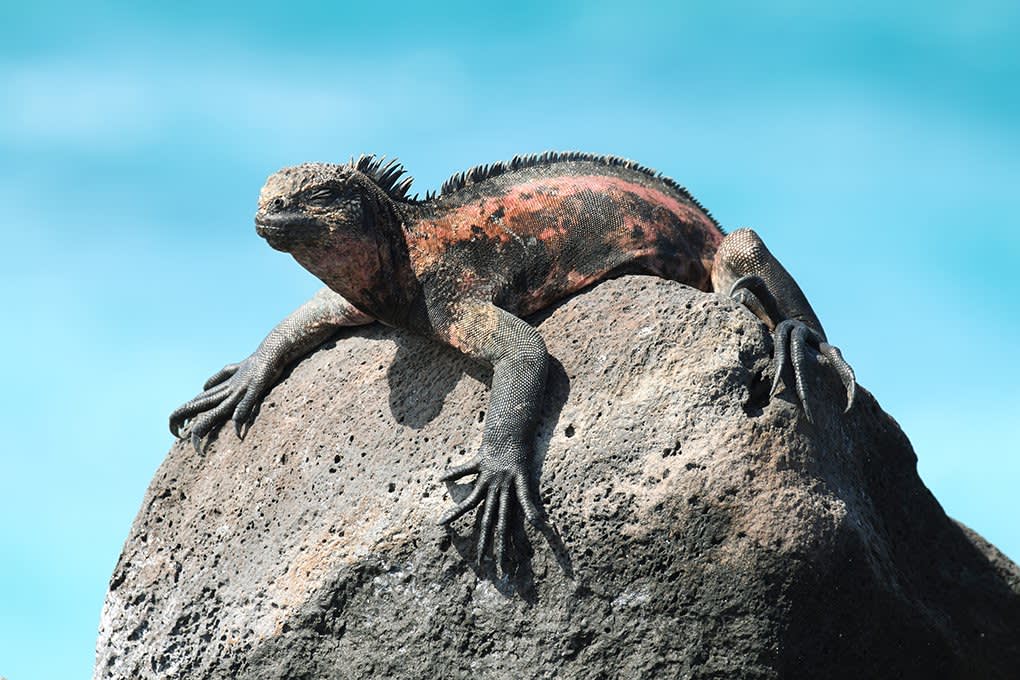 Marine Iguana
Marine Iguana The Marine iguana is a unique creature – it is the only lizard in existence to forage in the ocean! It dives down into the cold water, swimming gracefully and using its long, curved claws and blunt head to get at its food.
Once it returns to the surface, the Marine iguana has to bask in the sun until it can properly move once again since it’s cold-blooded; during this time it’s in danger of becoming prey itself, so it relies on threats and bluffs to ward away other opportunists.
Blue-footed booby
Approximately half of all of these iconic seabirds nest on the Galapagos. Aside from their brightly coloured blue feet, which the boobies show off in intricate mating displays, boobies are well-adapted aquatic hunters: their long, hooked beaks are perfect for snaring fish, their eyes are sharp and positioned forwards to allow for binocular vision, and their nostrils are permanently closed due to the frequency with which they have to dive headlong into the ocean.
Galapagos Tortoise
A fascinating case – the Galapagos tortoise is the largest variety in the world, and before the arrival of humans had absolutely no natural predators due to their huge size and resilience. This impunity had the unfortunate side-effect of breeding a docile, placid nature into the tortoises.
The species after which the islands were named was tragically unprepared for the arrival of humans (and the rats, pigs and dogs they brought with them), and became perilously close to extinction; only through extensive conservation efforts have they been brought back from the brink.
Sally Lightfoot
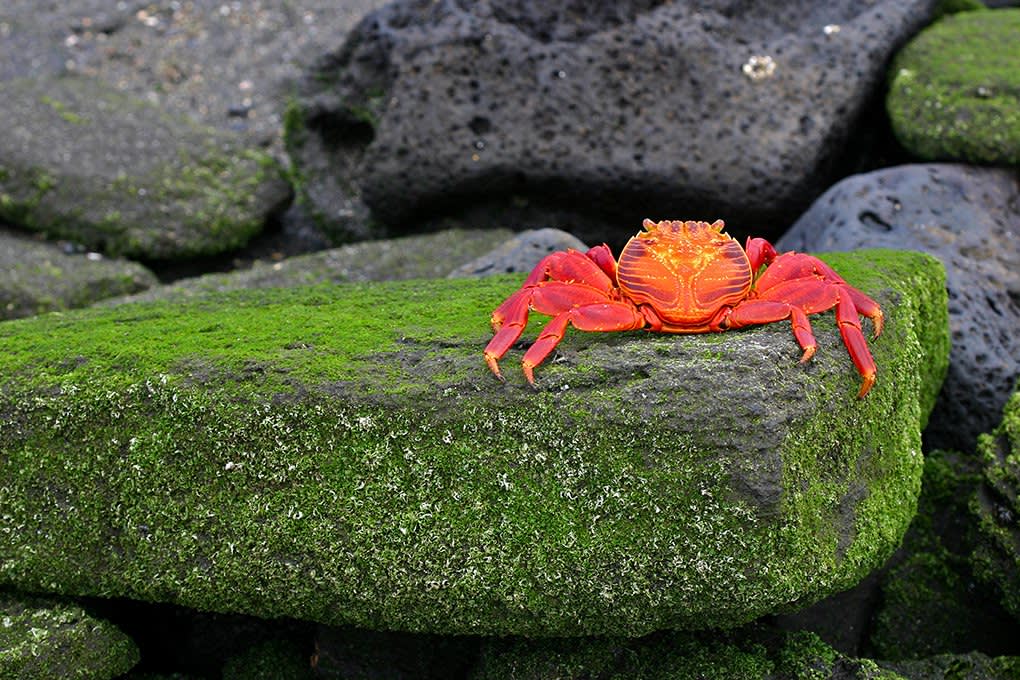 Sally lightfoot crab
Sally lightfoot crab This colourful, notoriously agile little crab is not endemic to the Galapagos. The Galapagos population does, however, exhibit an unusual adaptive behaviour unique to them. They have a symbiotic relationship with the Marine iguanas – they climb over the lizards while they bathe in the sun, cleaning the ticks from their bodies!
Galapagos Penguin
The world’s only variety that lives north of the equator (in the wild, at least), this tiny penguin can only live in the Galapagos by virtue of the Humboldt Current, which brings cold water from the south.
The current keeps the penguins cool and brings them food – but the local heat takes its toll on creatures originally from colder climes. The birds tend to keep to the water by day to avoid the worst of it, but when that fails they make sure to keep the sun off their thin, membranous feet and pant heavily, allowing the heat to better escape their bodies.
Galapagos Mockingbird
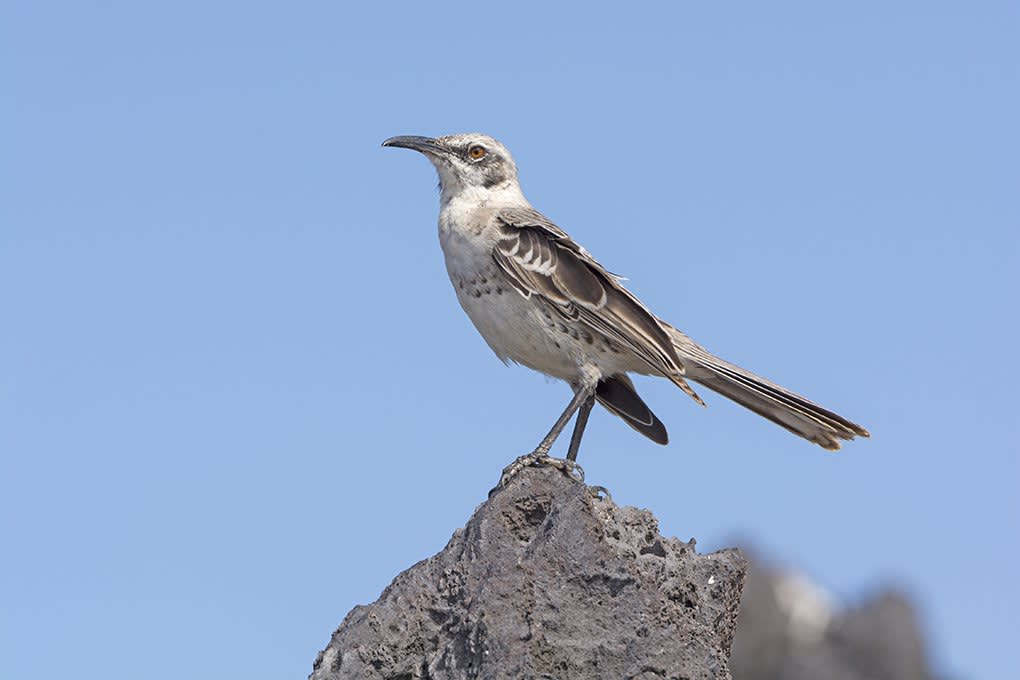 Galapagos Mockingbird
Galapagos Mockingbird Now, this one’s a bit of a curve-ball. The Galapagos mockingbird has the unusual trait of occasionally running on foot to catch its prey, but that’s not what makes it of real interest to wildlife enthusiasts.
These birds were, it’s said, the first evidence that Darwin ever saw of differentiation between species on the islands, making them important parts of the history of science!
Browse our trips below and get up close and personal to Galapagos animals.
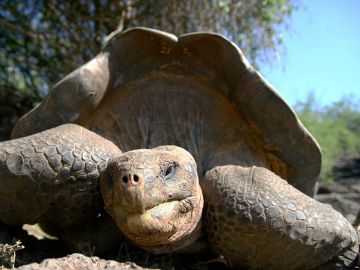
 Blue-footed Boobies
Blue-footed Boobies Galapagos tortoise
Galapagos tortoise
